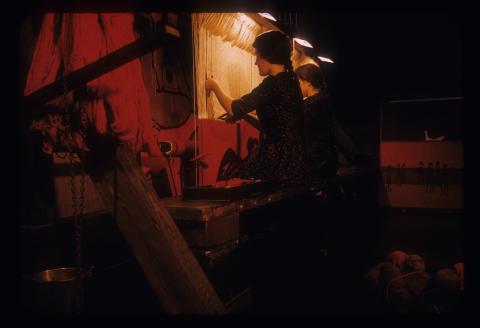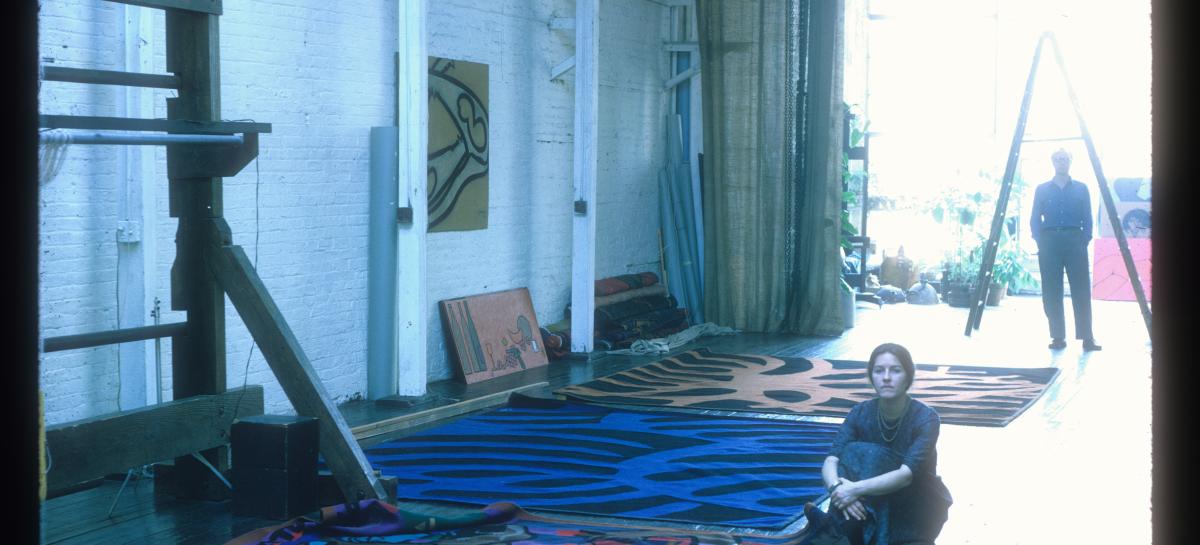When Yoors started designing tapestries, that art form flourished and was entering a period of innovation in Belgium and Europe. Integration in architecture became crucial. Simpler designs with areas of uniform colour were a hit.
Most of his colleagues outsourced their production to ateliers. Yoors wove his designs at home. When Yoors moved to New York in 1950 with Annabert and Marianne, they lived in a large studio. They installed a large loom and became the first independent weaving atelier in the United States. The work was part of family life, weaving was a way of life.
Initially Yoors wove in a figurative and narrative style. His designs were based on the Old Testament and showed nomadic Jewish tribes. In New York he was inspired by Afro-American and Puerto Rican women. He was also influenced by stained-glass windows, Henri Matisse and the Japanese artist Hokusai.

Yoors evolved to abstract works at the end of the 1950s. He was very interested in modern architecture. High reception areas with large wall spaces were in fashion at that time; ideal for tapestries. Yoors usually worked via an architect and was involved in building projects from the start. He designed his tapestries with the space for which they were intended at the back of his mind.
“For me tapestries must be of epic scale and heroic dimensions.”
Yoors invariably worked on a monumental scale and employed an epic style. For his abstract work he was also inspired by his environment: photos of a certain detail in the urban landscape were often the basis for his later designs (be sure to read ‘the work process’). Annabert and Marianne continued to weave after his death in 1977. They completed countless unfinished designs.



